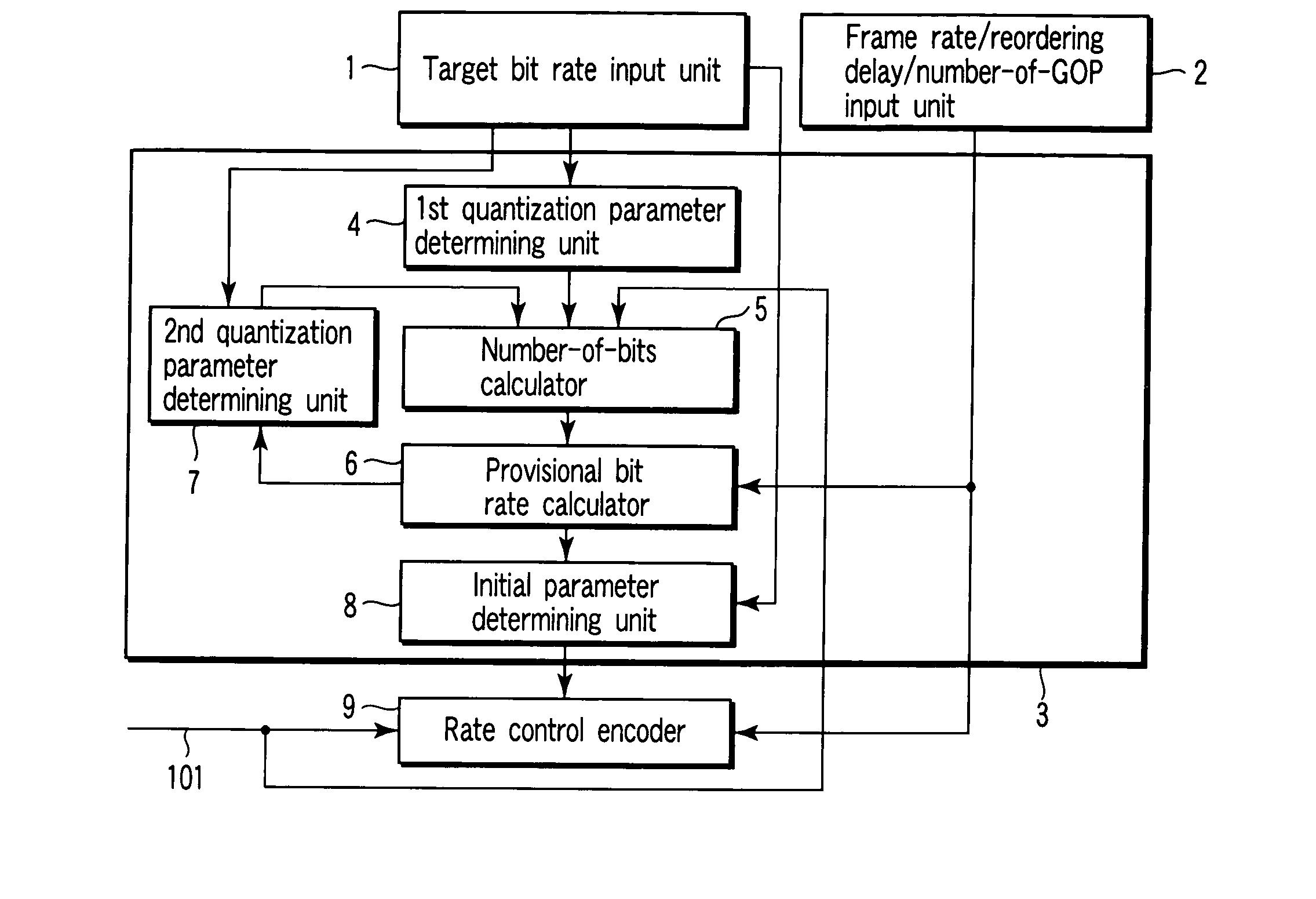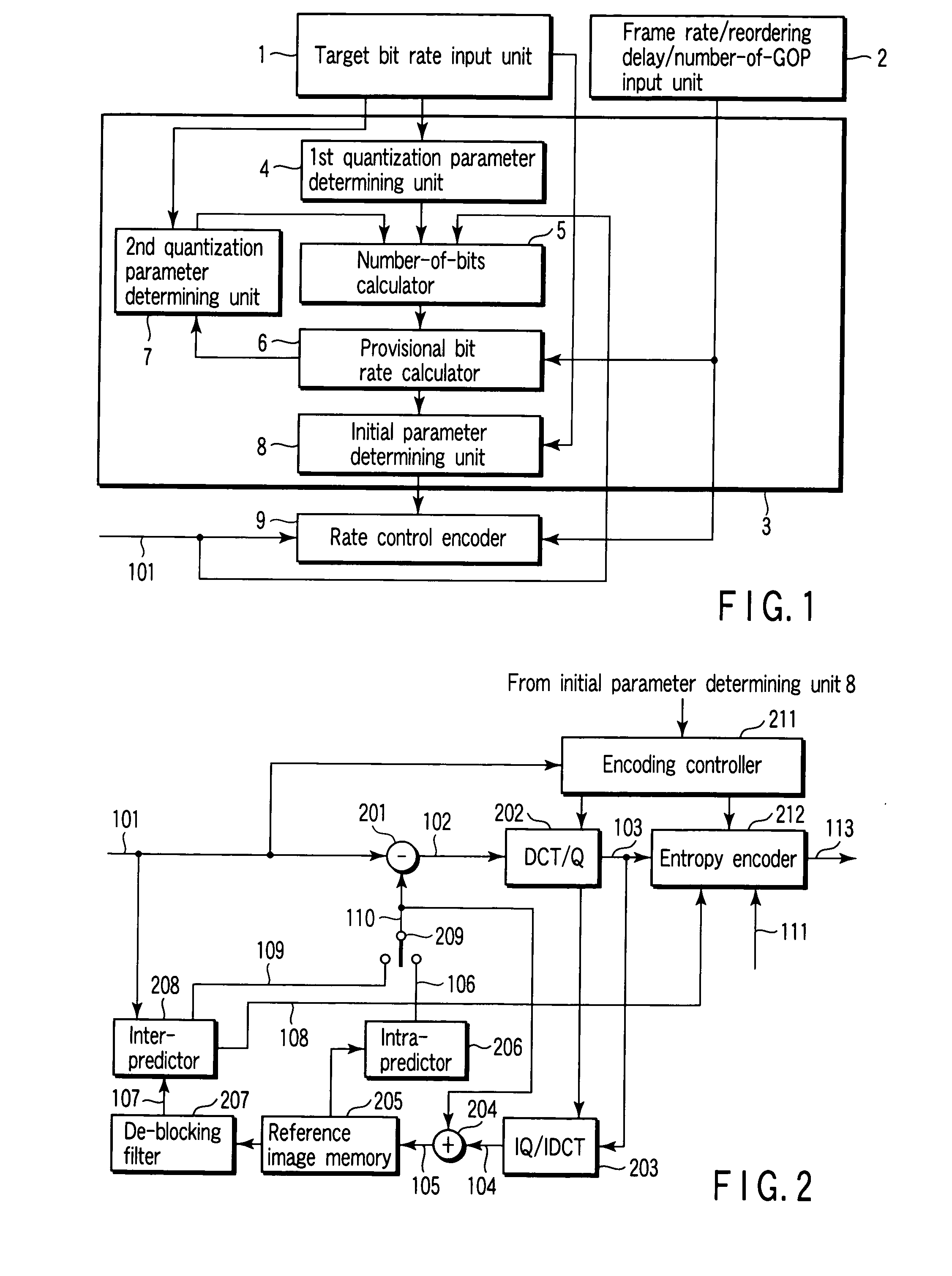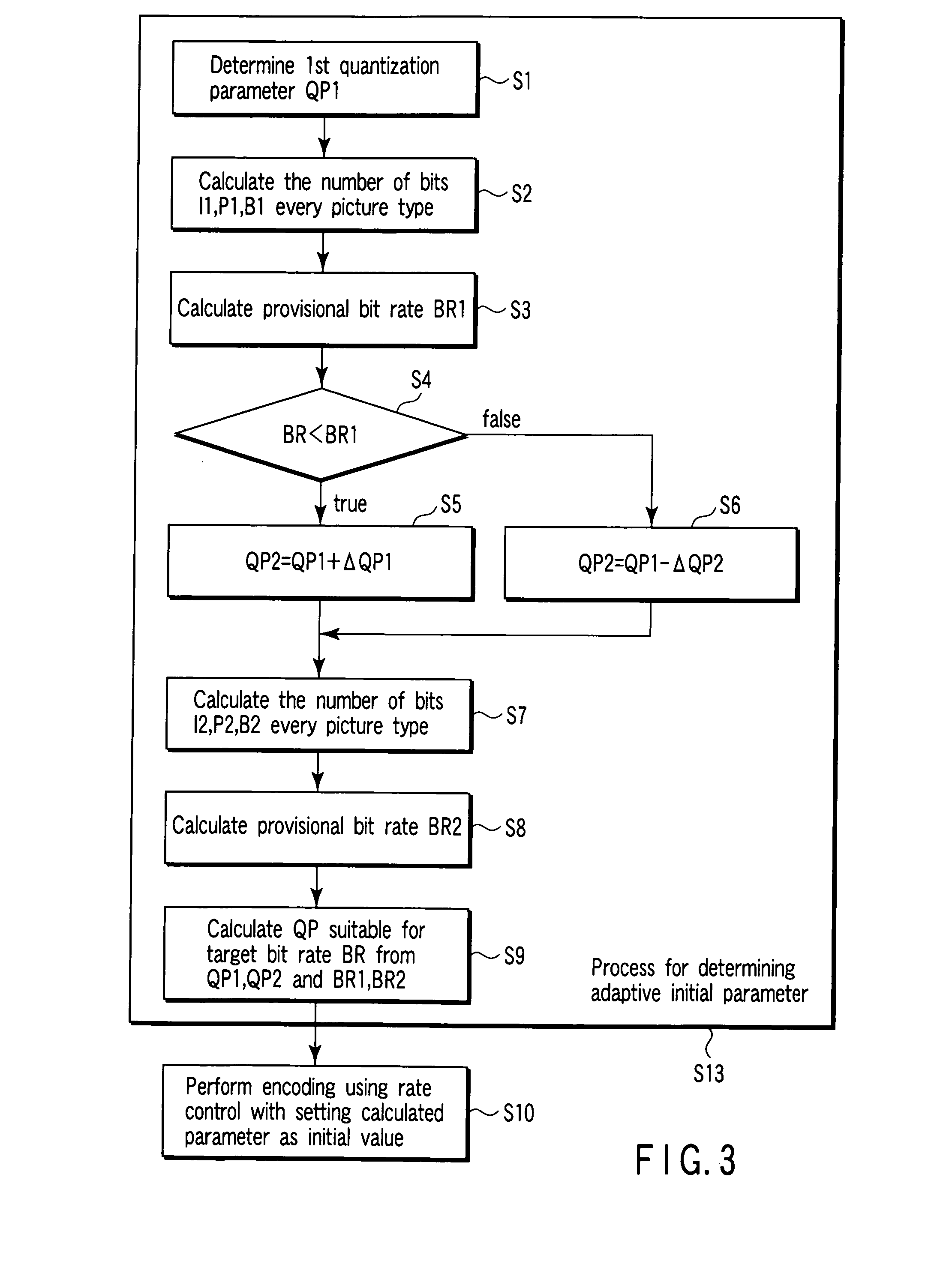Video encoding method, apparatus, and program
a video encoding and video technology, applied in the field of video encoding, can solve the problems of not necessarily obtaining high image quality, difficult to achieve high-quality images in consideration of image characteristics, and inability to take into account the image quality in the entire sequence of motion pictures
- Summary
- Abstract
- Description
- Claims
- Application Information
AI Technical Summary
Benefits of technology
Problems solved by technology
Method used
Image
Examples
first embodiment
(First Embodiment)
[0048]FIG. 1 shows a video encoding apparatus according to a first embodiment of the present invention, and the apparatus has a target bit rate (BR) input unit 1, a frame rate (FR) / reordering delay (M) / number-of-GOP input unit 2, an adaptive initial parameter determining unit 3, and a rate control encoder 9. The adaptive initial parameter determining unit 3 has a first quantization parameter (QP1) determining unit 4, a calculator 5 for calculating the number of encoded bits for every picture type (referred to as the number-of-bits calculator)), a provisional bit rate calculator 6 using the number of bits every picture type, a second quantization parameter (QP2) determining unit 7, and an initial parameter determining unit 8.
[0049]FIG. 2 shows the details of the rate control encoder 9 in FIG. 1. This example shows a principal part of a video encoder implemented in relation to H. 264. A video signal 101 which is an object to be encoded is inputted to a subtracter 20...
second embodiment
(Second Embodiment)
[0084] Next, a second embodiment of the present invention will be described. In the second embodiment, not only the quantization parameter initial value QP, but also an initial value of a global complexity measure is determined in the initial parameter determining unit 7 of FIG. 1.
[0085] Hereinafter, a global complexity measure will be explained. A global complexity measure is a parameter used in a system employed in TM5 of MPEG-2. With respect to TM5, a model is assumed in which the product of an average quantization parameter and the number of encoded bits is a constant value every picture type unless an image changes. In the following equation, X is a global complexity measure every picture type, S is the number of bits every picture type, and Q is an average quantization parameter every picture type. Xi=SiQiXp=SpQpXb=SbQb}(6)
[0086] In rate control of TM5, bit allocation of the following picture is carried out by use of values of global complexity measures...
third embodiment
(Third Embodiment)
[0093] Next, a third embodiment of the present invention will be described. In the present embodiment, adaptive initial parameter determining processing S15 shown in FIG. 9 is carried out in the video encoding apparatus shown in FIG. 1. In FIG. 9, processing in step S12 is further added to the adaptive initial parameter determining processing S14 in the second embodiment shown in FIG. 7.
[0094] More specifically, in the third embodiment, a quantization parameter QP suitable for the target bit rate BR is first calculated in the initial parameter determining unit 7 shown in FIG. 1 in the same way as in the second embodiment (step S9). Next, initial values of global complexity measures are calculated by using the QP in the same way as in the second embodiment (step S11). Thereafter, constant parameters in the updating equations of the global complexity measures are determined on the basis of the quantization parameters QP1 and QP2, and the numbers of bits I1, I2, P1, ...
PUM
 Login to View More
Login to View More Abstract
Description
Claims
Application Information
 Login to View More
Login to View More - R&D
- Intellectual Property
- Life Sciences
- Materials
- Tech Scout
- Unparalleled Data Quality
- Higher Quality Content
- 60% Fewer Hallucinations
Browse by: Latest US Patents, China's latest patents, Technical Efficacy Thesaurus, Application Domain, Technology Topic, Popular Technical Reports.
© 2025 PatSnap. All rights reserved.Legal|Privacy policy|Modern Slavery Act Transparency Statement|Sitemap|About US| Contact US: help@patsnap.com



